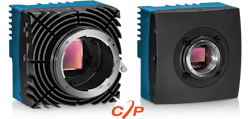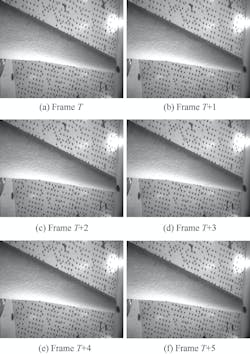New Surface Friction Measurement Method May Help Reduce Aircraft Drag and Improve Fuel Efficiency
In aerospace engineering, reducing surface friction in the design of an aircraft is instrumental to lowering fuel consumption. A Boeing 747, for instance, will burn approximately 10 tons of fuel per hour, so incremental improvements in fuel efficiency resulting from less friction will enhance airline profitability. Even during stable flight, friction can account for roughly half of an aircraft's total drag, which shortens a plane's effective travel range and also adds mechanical stress.
Although there are currently several methods for aerospace engineers to measure surface friction through flight turbulence simulation, each method has drawbacks.
Scientists at the School of Aeronautics and Astronautics, Sichuan University (Chengdu, China), and Xihua University (Chengdu, China) have proposed a new method of measuring aerospace friction. Their recently published paper demonstrated a method of visually monitoring fluid flow behavior on a simulated aircraft wing within a wind tunnel and analyzing the acquired image data with the FlowNet Deep Learning Optical Flow Method. Used extensively in computer vision, FlowNet applies a convolutional neural network to learn unique features of acquired images. In this case, the captured images show the velocity values of fluorescent oils under high-force winds similar to those experienced during flight and then using deep learning to solve the friction distribution.
The test environment consisted of a 2.4 × 2.4-meter transonic wind tunnel, where a Mikrotron EoSens high-speed CMOS camera was mounted 1.4 meters away from a static elastic wing simulating the actual wing on an aircraft. Tests were performed at a constant wind speed of 0.82Ma (608 mph, 978 kmh) and an angle of 3 degrees, while fluorescent oil film on the wing was excited by a 365 mm Ultraviolet (UV) light source.
To avoid scattering of the UV light source on the wing surface, a filter was added to the Mikrotron camera lens to allow only 520 nm fluorescence to pass through. Configured at a resolution of 5120 x 5120 pixels (4.5 x 4.5 μm pixel size), the camera was able to transmit its image data back to a host PC at a rate of 80 frames-per-second (FPS) leveraging the CoaXPress interface.
Because of its stronger anti-interference capability, the FlowNet model was found by scientists to be able to obtain a clearer, more accurate velocity flow streamline during the tests compared to other techniques and to better handle complex surface flow situations. Their quantitative results show that their model has great potential in the science of aerospace friction measurement. Future research will concentrate on ways to add more input images while cutting down on computation time.
Learn more about Mikrotron cameras at www.svs-vistek.com.

